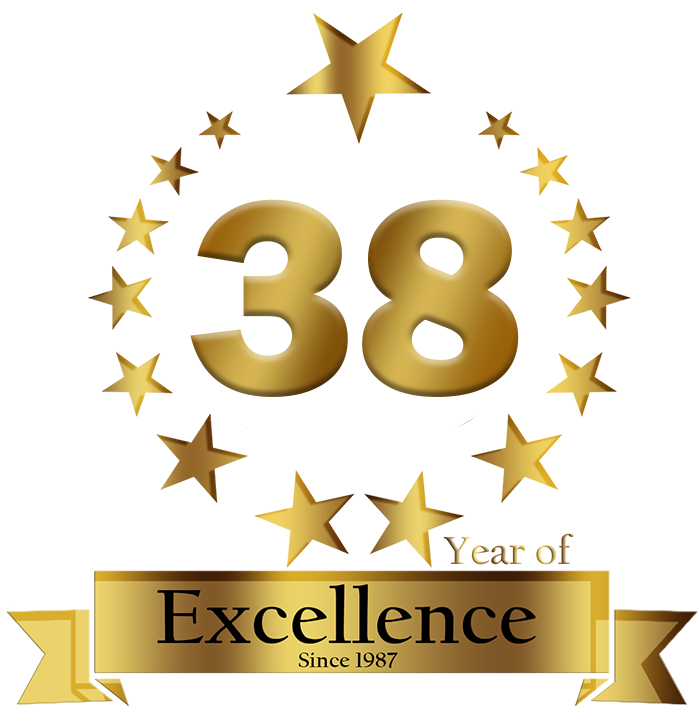Explore Pakistan
Explore Pakistan
History:
Pakistan emerged as an independent nation in 1947, gaining sovereignty from British rule. Founded under the leadership of Muhammad Ali Jinnah, it was envisioned as a homeland for Muslims of the Indian subcontinent. Pakistan has flourished as a diverse and vibrant nation with a rich cultural heritage deeply rooted in ancient civilizations, including the Indus Valley Civilization. Over the years, it has undergone periods of political and economic development, contributing to regional stability and fostering diplomatic relations on the global stage. Today, Pakistan stands as a dynamic country with a unique blend of traditions and modernity, embracing its cultural richness while progressing towards a promising future.
People and languages:
Pakistan boasts a diverse tapestry of people and languages, reflecting a rich cultural mosaic. The nation celebrates a vibrant mix of traditions with a population comprising various ethnicities, including Punjabis, Sindhis, Pashtuns, and Baloch. Urdu serves as the official language, fostering unity among citizens from different linguistic backgrounds. However, regional languages such as Punjabi, Sindhi, Pashto, and Balochi flourish, contributing to the country’s linguistic diversity. This multicultural blend is a testament to the harmonious coexistence of different communities, each adding unique hues to the vibrant fabric of Pakistani society.
Weather:
Pakistan experiences diverse weather patterns across its regions. In the northern areas, including the scenic valleys and mountains, the climate tends to be cool to cold, with snowfall in winter. The central and southern regions, such as Punjab and Sindh, generally have hot summers and mild winters. Coastal areas, like Karachi, have a tropical climate with high temperatures and humidity. The country witnesses distinct seasons, including spring with blossoming flowers, a hot summer, a monsoon season with rainfall, and a cooler autumn. Pakistan’s geographical variations contribute to this climatic diversity, offering a range of weather experiences for residents and visitors alike.
Costs, Currency, Exchange Rate:
Costs in Pakistan are relatively affordable, making it an economical destination for travellers. The official currency is the Pakistani Rupee (PKR), and exchange rates may fluctuate. Exchanging currency at authorised outlets for the most favourable rates is advisable. A diverse range of accommodations, dining options, and transportation choices in major cities cater to various budgets. Bargaining is common in local markets. Credit cards are accepted in urban areas, but carrying cash in more remote locations is advisable. Overall, Pakistan provides a cost-effective and enriching travel experience for those seeking affordability without compromising exploration and cultural immersion.
Traveling to Pakistan:
Visa:
In March 2023, the Ministry of Interior in Pakistan introduced an electronic visa platform for tourists from 192 countries planning to visit. This initiative aims to attract foreign tourists, promote the country’s tourism sector, and enhance Pakistan’s image as a tourist destination globally. For detailed information on e-visa services, please visit the official website: https//visa.nadra.gov.pk. Zeb Travels is excited to welcome you to Pakistan’s beautiful and hospitable country.
Overland from China:
The Khunjerab Pass is open (weather permitting) from May 1st to October 31st. Customs, immigration, and health formalities at the Sost border post can be completed daily from 9 am to 11 am for outgoing travellers and up to 4 pm for incoming travellers. Daily NATCO buses and private transport connect Tashkurgan with Sost.
Flights:
Pakistan International Airlines (PIA) serves as the national carrier, with numerous international airlines listing Pakistan as a destination. Various domestic airlines, such as Serene Air and Air Blue, connect 38 domestic airports with daily flights. PIA offers daily flights linking northern tourist towns, including Gilgit, Skardu, and Chitral, with Islamabad and additionally connects Chitral with Peshawar. Note that all flights to the northern region are subject to weather conditions.
Overland from India:
The Wagah border, between Amritsar and Lahore, is the only open land border between India and Pakistan, accessible to foreigners seven days a week. A visa is required for both countries.
Overland from Iran:
The border is open only at Taftan, from 9 am till 1 pm and 2 pm till 5 pm. Seven buses travel between Taftan and Quetta in Baluchistan, with a one-way trip lasting approximately 18 hours. Please check the travel advisory for Pakistan before travelling.
Means of Travel within Pakistan:
Travelling within Pakistan offers various means of transportation to explore its diverse landscapes and cultural gems. Domestic flights are a convenient option, connecting major cities and tourist destinations, with airlines like Pakistan International Airlines (PIA), Serene Air, and Air Blue operating regular services. An extensive road network facilitates travel via buses, minibuses, and private cars for those who prefer ground transportation. Inter-city bus services provide cost-effective and efficient connectivity, making it easy to move between different regions. Additionally, Pakistan’s railways offer a unique and scenic way to traverse the country, allowing travellers to enjoy picturesque views. Whether by air, road, or rail, each mode of transportation unveils a different facet of Pakistan’s beauty and charm.
Accommodation Options:
Pakistan offers diverse accommodation options catering to various preferences and budgets. In major cities like Islamabad, Lahore, and Karachi, you’ll find a mix of international hotel chains, boutique hotels, and guesthouses, providing comfortable and modern amenities. In the northern regions, especially around tourist hubs like Gilgit, Skardu, and Swat, you can choose from cozy guesthouses, traditional lodges, or even campsites for a closer connection to nature. Additionally, Airbnb and other online platforms offer a variety of lodging options, allowing travellers to tailor their stay according to individual preferences. Whether you are seeking luxury, cultural immersion, or budget-friendly stays, Pakistan provides a rich tapestry of accommodation choices to enhance your travel experience.
Top of Form
Shopping:
Discover unique treasures in Pakistan as a tourist by exploring local markets and embracing the rich cultural offerings. Handwoven carpets, intricately carved wooden items, and luxurious Pashmina shawls showcase the country’s exquisite craftsmanship. Delight in the vibrant colours of traditional clothing like shalwar kameez or bring home a piece of Pakistan’s musical heritage with instruments like the sitar. Gems and jewellery enthusiasts can find high-quality gemstones, while spice lovers can indulge in aromatic blends and teas. Consider adding calligraphy art pieces or intricately embroidered textiles to your collection, each telling a story of Pakistan’s rich cultural tapestry. Shopping in Pakistan is not just about acquiring souvenirs; it’s a journey into the heart of the country’s artistic and traditional legacy.
What to eat and drink:
Indulge your taste buds in Pakistan’s diverse and flavourful cuisine, offering a culinary adventure that reflects the country’s rich cultural heritage. Savour succulent kebabs, aromatic biryanis, and flavourful curries, each dish telling a tale of tradition and local flavours. Street food enthusiasts can explore the bustling markets for delights like golgappas, seekh kebabs, and samosas. Don’t miss the opportunity to try Pakistani sweets, with treats like gulab jamun and jalebi offering a sweet conclusion to your meals. Quench your thirst with refreshing drinks like sugarcane juice, lassi, or the popular Kashmiri chai. Pakistani cuisine is a delightful journey for the senses, inviting you to explore the diverse and delectable offerings that define the country’s culinary landscape.
Clothing:
Dress comfortably and respectfully in Pakistan, considering the cultural norms and diverse climates. For men, traditional clothing includes shalwar kameez, a loose-fitting tunic paired with straight-cut trousers. Women often wear shalwar kameez as well, with the addition of colourful dupattas (scarves). Western-style clothing is widely accepted in urban areas, but modesty is key. When visiting religious sites, covering your head and shoulders is advisable. In colder regions, such as the northern areas, bring warm layers, as temperatures can drop significantly. Regardless of the region, it’s always a good idea to check local customs and dress codes to ensure respectful attire in various settings.
Public holidays:
Pakistan observes a range of public holidays, blending religious, cultural, and national significance. Major holidays include:
Eid-ul-Fitr: Celebrating the end of Ramadan, this joyous festival marks a day of feasting, family gatherings, and charitable acts.
Eid-ul-Adha: The “Festival of Sacrifice” commemorates Prophet Ibrahim’s willingness to sacrifice his son for God. Families come together, animals are often sacrificed, and the meat is distributed among the less fortunate.
Independence Day (14th August): Celebrating Pakistan’s independence from British rule in 1947, this day is marked by patriotic events, flag hoisting, and cultural activities.
Pakistan Day (23rd March): Commemorating the Lahore Resolution in 1940, this day celebrates the adoption of the country’s first constitution.
Ashura: A significant day for Shia Muslims commemorating the martyrdom of Imam Hussain. It involves processions, rituals, and acts of mourning.
Labour Day (1st May): Recognizing the contributions of workers, Labour Day is marked by rallies, parades, and discussions on workers’ rights.
Quaid-e-Azam Day (25th December): Celebrating the birthday of Muhammad Ali Jinnah, the founder of Pakistan, this day honours his leadership in the country’s creation.
Note that Islamic holidays follow the lunar calendar and may vary each year. It’s advisable to check the specific dates for holidays during your visit to plan accordingly
History
The historical tapestry of Pakistan is intricate, with each phase contributing to its rich and diverse heritage. The Prehistoric Period paints a picture of ancient human evolution and settlement. Sites like Mehrgarh, dating back to nearly 7000 BCE, provide evidence of early farming communities and social structures, offering a glimpse into the region’s Neolithic era.
Moving into the Ancient History of Pakistan, the spotlight falls squarely on the magnificent Indus Valley Civilization. Flourishing between 3300 BCE and 1300 BCE, this civilisation was a beacon of urban development, with meticulously planned cities, advanced drainage systems, and intricate art and craft. Cities such as Mohenjo-Daro and Harappa were not only centres of trade and commerce but also hubs of cultural and intellectual exchange, showcasing the zenith of ancient South Asian civilisation.
The Medieval History of Pakistan unfolds a saga of dynasties, conquests, and cultural syncretism. From the invasions of Alexander, the Great to the establishment of the mighty Mughal Empire, this period witnessed a blend of indigenous traditions with external influences. The region became a crucible of diverse cultures, religions, and traditions, each contributing to its evolving identity.
The advent of the Muslim Period marked a pivotal juncture in Pakistan’s history. With the arrival of Islam in the 8th century, the region underwent profound socio-cultural transformations. The synthesis of Islamic principles with local customs led to the rise of magnificent Islamic empires, such as the Ghaznavids, the Delhi Sultanate, and later, the Mughals. These empires not only reshaped the political landscape but also enriched the cultural milieu of the subcontinent.
Finally, the Modern History of Pakistan commences with the nation’s hard-fought independence in 1947, spearheaded by the indomitable spirit of Muhammad Ali Jinnah. The subsequent decades have witnessed periods of rapid industrialisation, socio-political upheavals, and significant strides in arts, literature, and sciences. Today, Pakistan stands as a testament to its storied past, a nation that cherishes its historical legacy while navigating the complexities of the modern world, poised to carve a distinctive niche on the global stage.
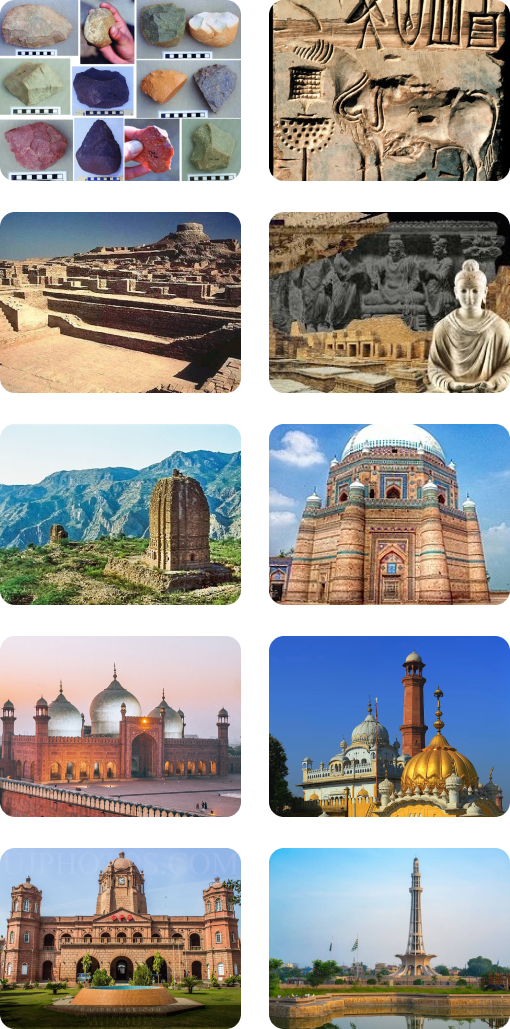
People and languages
Pakistan boasts a diverse tapestry of people and languages, reflecting a rich cultural mosaic. The nation celebrates a vibrant mix of traditions with a population comprising various ethnicities, including Punjabis, Sindhis, Pashtuns, and Baloch. Urdu serves as the official language, fostering unity among citizens from different linguistic backgrounds. However, regional languages such as Punjabi, Sindhi, Pashto, and Balochi flourish, contributing to the country’s linguistic diversity. This multicultural blend is a testament to the harmonious coexistence of different communities, each adding unique hues to the vibrant fabric of Pakistani society.

Weather
Pakistan experiences diverse weather patterns across its regions. In the northern areas, including the scenic valleys and mountains, the climate tends to be cool to cold, with snowfall in winter. The central and southern regions, such as Punjab and Sindh, generally have hot summers and mild winters. Coastal areas, like Karachi, have a tropical climate with high temperatures and humidity. The country witnesses distinct seasons, including spring with blossoming flowers, a hot summer, a monsoon season with rainfall, and a cooler autumn. Pakistan’s geographical variations contribute to this climatic diversity, offering a range of weather experiences for residents and visitors alike.

Costs, Currency, Exchange Rate
Costs in Pakistan are relatively affordable, making it an economical destination for travellers. The official currency is the Pakistani Rupee (PKR), and exchange rates may fluctuate. Exchanging currency at authorised outlets for the most favourable rates is advisable. A diverse range of accommodations, dining options, and transportation choices in major cities cater to various budgets. Bargaining is common in local markets. Credit cards are accepted in urban areas, but carrying cash in more remote locations is advisable. Overall, Pakistan provides a cost-effective and enriching travel experience for those seeking affordability without compromising exploration and cultural immersion.
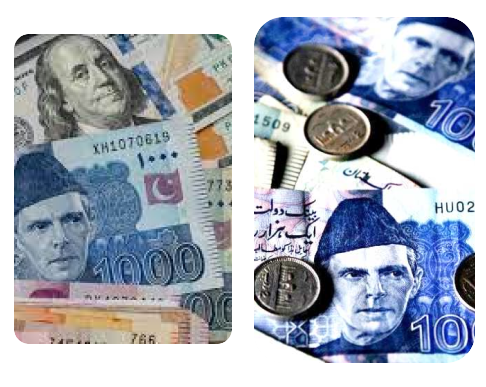
Traveling to Pakistan
Visa:
In March 2023, the Ministry of Interior in Pakistan introduced an electronic visa platform for tourists from 192 countries planning to visit. This initiative aims to attract foreign tourists, promote the country’s tourism sector, and enhance Pakistan’s image as a tourist destination globally. For detailed information on e-visa services, please visit the official website: https//visa.nadra.gov.pk. Universal Travels is excited to welcome you to Pakistan’s beautiful and hospitable country.
Overland from China:
The Khunjerab Pass is open (weather permitting) from May 1st to October 31st. Customs, immigration, and health formalities at the Sost border post can be completed daily from 9 am to 11 am for outgoing travellers and up to 4 pm for incoming travellers. Daily NATCO buses and private transport connect Tashkurgan with Sost.
Flights:
Pakistan International Airlines (PIA) serves as the national carrier, with numerous international airlines listing Pakistan as a destination. Various domestic airlines, such as Serene Air and Air Blue, connect 38 domestic airports with daily flights. PIA offers daily flights linking northern tourist towns, including Gilgit, Skardu, and Chitral, with Islamabad and additionally connects Chitral with Peshawar. Note that all flights to the northern region are subject to weather conditions.
Overland from India:
The Wagah border, between Amritsar and Lahore, is the only open land border between India and Pakistan, accessible to foreigners seven days a week. A visa is required for both countries.
Overland from Iran:
The border is open only at Taftan, from 9 am till 1 pm and 2 pm till 5 pm. Seven buses travel between Taftan and Quetta in Baluchistan, with a one-way trip lasting approximately 18 hours. Please check the travel advisory for Pakistan before travelling.
Means of Travel within Pakistan:
Travelling within Pakistan offers various means of transportation to explore its diverse landscapes and cultural gems. Domestic flights are a convenient option, connecting major cities and tourist destinations, with airlines like Pakistan International Airlines (PIA), Serene Air, and Air Blue operating regular services. An extensive road network facilitates travel via buses, minibuses, and private cars for those who prefer ground transportation. Inter-city bus services provide cost-effective and efficient connectivity, making it easy to move between different regions. Additionally, Pakistan’s railways offer a unique and scenic way to traverse the country, allowing travellers to enjoy picturesque views. Whether by air, road, or rail, each mode of transportation unveils a different facet of Pakistan’s beauty and charm.
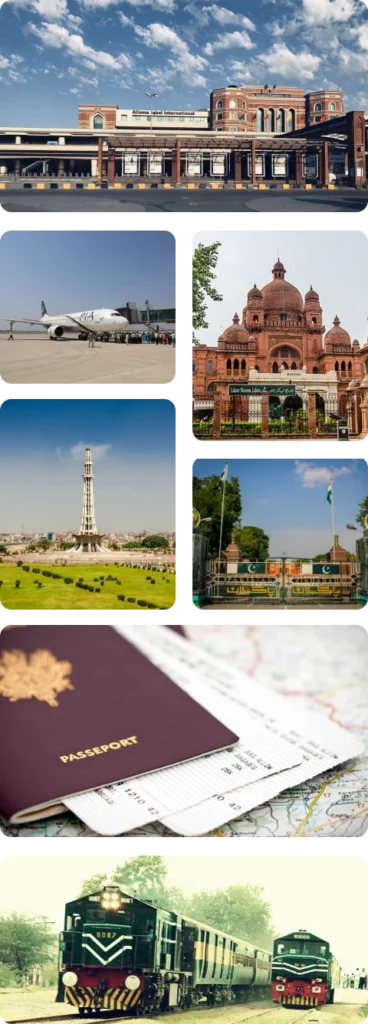
Accommodation Options
Pakistan offers diverse accommodation options catering to various preferences and budgets. In major cities like Islamabad, Lahore, and Karachi, you’ll find a mix of international hotel chains, boutique hotels, and guesthouses, providing comfortable and modern amenities. In the northern regions, especially around tourist hubs like Gilgit, Skardu, and Swat, you can choose from cozy guesthouses, traditional lodges, or even campsites for a closer connection to nature. Additionally, Airbnb and other online platforms offer a variety of lodging options, allowing travellers to tailor their stay according to individual preferences. Whether you are seeking luxury, cultural immersion, or budget-friendly stays, Pakistan provides a rich tapestry of accommodation choices to enhance your travel experience.
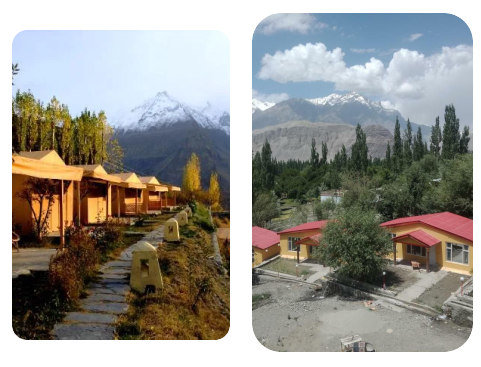
Shopping
Discover unique treasures in Pakistan as a tourist by exploring local markets and embracing the rich cultural offerings. Handwoven carpets, intricately carved wooden items, and luxurious Pashmina shawls showcase the country’s exquisite craftsmanship. Delight in the vibrant colours of traditional clothing like shalwar kameez or bring home a piece of Pakistan’s musical heritage with instruments like the sitar. Gems and jewellery enthusiasts can find high-quality gemstones, while spice lovers can indulge in aromatic blends and teas. Consider adding calligraphy art pieces or intricately embroidered textiles to your collection, each telling a story of Pakistan’s rich cultural tapestry. Shopping in Pakistan is not just about acquiring souvenirs; it’s a journey into the heart of the country’s artistic and traditional legacy.
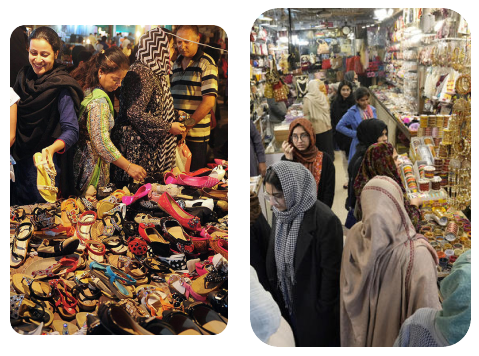
What to eat and drink
Indulge your taste buds in Pakistan’s diverse and flavourful cuisine, offering a culinary adventure that reflects the country’s rich cultural heritage. Savour succulent kebabs, aromatic biryanis, and flavourful curries, each dish telling a tale of tradition and local flavours. Street food enthusiasts can explore the bustling markets for delights like golgappas, seekh kebabs, and samosas. Don’t miss the opportunity to try Pakistani sweets, with treats like gulab jamun and jalebi offering a sweet conclusion to your meals. Quench your thirst with refreshing drinks like sugarcane juice, lassi, or the popular Kashmiri chai. Pakistani cuisine is a delightful journey for the senses, inviting you to explore the diverse and delectable offerings that define the country’s culinary landscape.
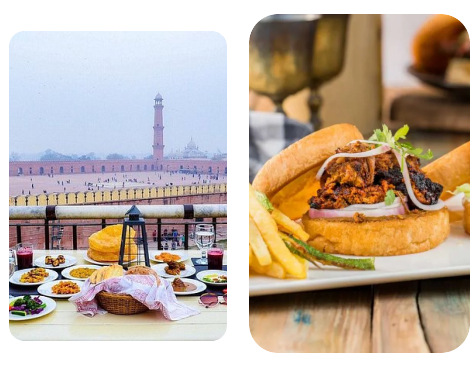
Clothing
Dress comfortably and respectfully in Pakistan, considering the cultural norms and diverse climates. For men, traditional clothing includes shalwar kameez, a loose-fitting tunic paired with straight-cut trousers. Women often wear shalwar kameez as well, with the addition of colourful dupattas (scarves). Western-style clothing is widely accepted in urban areas, but modesty is key. When visiting religious sites, covering your head and shoulders is advisable. In colder regions, such as the northern areas, bring warm layers, as temperatures can drop significantly. Regardless of the region, it’s always a good idea to check local customs and dress codes to ensure respectful attire in various settings.
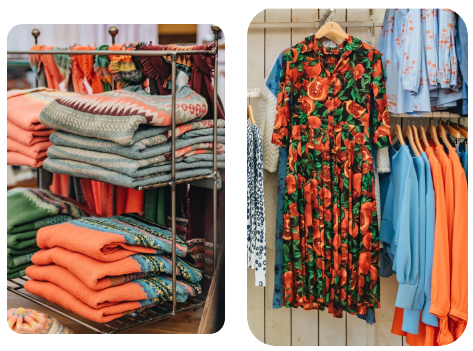
Public holidays
Pakistan observes a range of public holidays, blending religious, cultural, and national significance. Major holidays include:
Eid-ul-Fitr: Celebrating the end of Ramadan, this joyous festival marks a day of feasting, family gatherings, and charitable acts.
Eid-ul-Adha: The “Festival of Sacrifice” commemorates Prophet Ibrahim’s willingness to sacrifice his son for God. Families come together, animals are often sacrificed, and the meat is distributed among the less fortunate.
Independence Day (14th August): Celebrating Pakistan’s independence from British rule in 1947, this day is marked by patriotic events, flag hoisting, and cultural activities.
Pakistan Day (23rd March): Commemorating the Lahore Resolution in 1940, this day celebrates the adoption of the country’s first constitution.
Ashura: A significant day for Shia Muslims commemorating the martyrdom of Imam Hussain. It involves processions, rituals, and acts of mourning.
Labour Day (1st May): Recognizing the contributions of workers, Labour Day is marked by rallies, parades, and discussions on workers’ rights.
Quaid-e-Azam Day (25th December): Celebrating the birthday of Muhammad Ali Jinnah, the founder of Pakistan, this day honours his leadership in the country’s creation.
Note that Islamic holidays follow the lunar calendar and may vary each year. It’s advisable to check the specific dates for holidays during your visit to plan accordingly.


